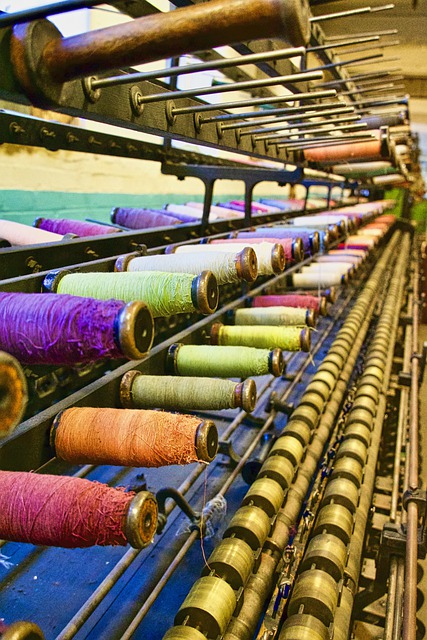The Indian import industry is worth a whopping sum of $21.11 billion. As of the recent survey of June 2020, the imports plunged 47.59 percent compared to last year’s stats. The subdued domestic demand for imports has seen a decline due to the ongoing pandemic situation. The worldwide coronavirus crisis has brought down the Indian import rate by 30%. The world crisis has seen a downfall in the purchase of Gold, coke, coal, briquettes, petroleum, crude products, machinery, electrical, nonelectrical and electronic goods. The pandemic has impacted the import and has brought down the export rate to 52.43% year-on-year to $60.44 billion. In the initial two months of the fiscal year 2020-2021, India’s imports plummeted to 40% to reach a worth of $20billion.
India main imports are mineral fuels, oils and waxes and bituminous substances (27 percent of total imports); pearls, precious and semi-precious stones and jewelry (14 percent); electrical machinery and equipment (10 percent); nuclear reactors, boilers, machinery and mechanical appliances (8 percent); and organic chemicals (4 percent). The primary import partners of India are China, the United States, United Arab Emirates, Saudi Arabia, and Switzerland. The other import locations for the Indian import industry are Russia, Australia, Thailand, Belgium, Malaysia, United Kingdom, Taiwan. The first imported products in India are Non-Pol Items, Petroleum Crude Products, Non-Oil, Oil, Project Goods, Raw Cotton, and waste. The total worth of the total imports is $617,945,603.08. The import trade worth is worth for 0.875 as opposed to a worth growth of 3.50%. The GDP of India is worth $617,945,603.08, and the Indian import services contribute $124,181,614,510. India’s import of goods and services have a contributing percentage of GDP of 23.14%.
The import sector of the Indian economy is the most important sector of India’s economic health. The performance of the import sector of the Indian economy determines the Export policy of India and, most importantly, the export-import Policy of India. The import sector is the main part of India’s foreign policy. The current EXIM policy of India covers policy statement for the import sector. The first laws that govern the import sector of the Indian economy are as follows:
- Imports shall be free, except in cases where they are regulated by the provisions of this Policy or any other law for the time being in force
- The item-wise import policy shall be specified in published and notified by Director General of Foreign Trade, as amended from time to time
- Every importer shall comply with the provisions of the Foreign Trade (Development and Regulation) Act, 1992, the Rules and Orders made thereunder, the provisions of this Policy and the terms and conditions of any license/certificate/permission granted to him, as well as provisions of any other law for the time being in force
- All imported goods shall also be subject to domestic Laws, Rules, Orders, Regulations, technical specifications, environmental and safety norms as applicable to domestically produced goods
- No import of rough diamonds shall be permitted unless the shipment parcel is accompanied by the Kimberley Process Certificate required under the procedure specified by the Gem & Jewelry Export Promotion Council.
- Duty credit allowed for importing capital goods, spare parts, office equipment, office furniture, and consumables that are importable under ITC (HS). Such imports cover all items of the service sector
- The Customs Act of India governs the levying of tariffs on imports and frames the rules. It also specifies the tariffs rates and provides for the imposition of anti-dumping and compensation charges
- Tariff rates, excise duties, regulatory duties are revised in each annual budget of India
- Total duties on imports now consist of basic duty which ranges from zero to 65% plus additional or countervailing duties
- On manufactured “luxury” items, total import taxes may amount to whooping 150%
- Import duties are product specific and can be revised in mid-year
The latest import policy of India
The Government of India’s latest export and import policy help in stabilizing the import growth levels. Indian imports shot up by 34.30% during the 1st quarter of 2007-2008. Today India ranks second in the import industry. The country is the second-largest manufacturer of small passenger car segment. India is also the world’s largest producer of generic pharmaceuticals and its information. The import industry of India is the most preferred destination for business process outsourcing. The outsourcing business provides the Indian import industry value of $15 billion. A business worth for a sum of $12.5 billion is outsourced from India. The productivity growth rate of the Indian economy is estimated to be around 8% and above.
What is the future of the Import Industry?
The import industry is handled at a central government level, and the Ministry of Commerce and Industry administers it. Foreign trade is accounted for 48.8% of India’s GDP. As per statistics, India is the eighth largest exporter and importer of commercial services in the world. The import trade accounts for 3.4% of the global trade in service. India recorded a 5.7% growth in services trade over the last few years. India imports around 6000 commodities from 140 countries in the world. India imported commodities worth for a sum of $462.9 billion in the last few years. The top five imported commodities as per HS 6 digit level products from the world by India along with trade value, are as follows:
- India imported Petroleum oils and oils obtained from bituminous, worth US$ 139,228,895.56 million.
- India imported Gold in unwrought forms non-monetary, worth US$ 38,299,466.84 million.
- India imported Other coal, not agglomerated, the net worth of US$ 27,890,361.33 million.
- India imported Diamonds non-industrial unworked or simply sawn, worth US$ 21,003,093.09 million.
- India imported Natural gas, liquefied, worth US$ 13,211,581.28 million.
The import percentage of the Indian imported goods by top five countries are as follows:
- India imports from China worth US$ 90,398 million, with a partner share of 14.63 percent.
- India imports from the United States worth US$ 38,904 million, with a partner share of 6.30 percent.
- India imports from Saudi Arabia worth US$ 34,343 million, with a partner share of 5.56 percent.
- India imports from the United Arab Emirates worth US$ 32,119 million, with a partner share of 5.20 percent.
- India imports from Iraq worth US$ 28,444 million, with a partner share of 4.60 percent.
The import of products by stages of processing along with the corresponding product share are as follows:
- India Raw materials exports are worth US$ 23,962 million, product share of 7.43%.
- India Raw materials imports are worth US$ 222,406 million, product share of 35.99%.
The Indian service trade data of the import industry are as follows:
- India, Service imports (BoP, current US$) is 124,181,614,510.00
- India, Imports of goods and services as a percentage of GDP is 23.64 %.
The tariffs imposed by the Indian government on the import industry are as follows:
- The maximum rate of tariff in percentage on any product is 150.
- The simple average tariff across all products is 9.03.
- The trade-weighted average tariff is 4.88.
- The total duty-free imports in thousands of US dollars are 251,848,149.75, and duty-free tariff line items share 17.71.
Here is a list of the top 10 imports of India.
| Rank | Commodity | HS Code | Value(US $Billion) | Share(%) |
| 1. | Oil | 27 | 177.5 | 38.3 |
| 2. | Gems, precious metals, coins | 71 | 60 | 13 |
| 3. | Electronics | 85 | 32 | 6.9 |
| 4. | Machines, Engines, Pumps | 85 | 31.2 | 6.7 |
| 5. | Organic chemicals | 29 | 18.3 | 4 |
| 6. | Plastics | 39 | 11.8 | 2.6 |
| 7. | Iron and Steel | 72 | 11.4 | 2.5 |
| 8. | Animal/vegetable fats and oils | 15 | 10.7 | 2.3 |
| 9. | Ores, slag and ash | 26 | 7.4 | 1.6 |
| 10. | Medical and technical equipment | 90 | 7.1 | 1.5 |
Here is a list of the India’s imports by country according to their estimated value.
| India Imports by Country | Last | Previous(INR Billion) | Year |
| China | 214.22 | 317.64 | Mar/20 |
| United States | 153.04 | 217.24 | Mar/20 |
| United Arab Emirates | 149.09 | 178.28 | Mar/20 |
| Saudi Arabia | 137.51 | 145.08 | Mar/20 |
| Iraq | 136.78 | 147.35 | Mar/20 |
| Hong Kong | 93.16 | 76.13 | Mar/20 |
| Singapore | 72.06 | 113.18 | Mar/20 |
| Nigeria | 66.57 | 49.72 | Mar/20 |
| South Africa | 65.84 | 45.58 | Mar/20 |
| Indonesia | 64.55 | 101.98 | Mar/20 |
| Qatar | 63.18 | 70.02 | Mar/20 |
| Japan | 62.30 | 71.40 | Mar/20 |
| Switzerland | 61.46 | 91.17 | Mar/20 |
| Russia | 58.13 | 24.05 | Mar/20 |
| Australia | 44.88 | 45.90 | Mar/20 |
| Belgium | 38.77 | 38.97 | Mar/20 |
| Thailand | 36.38 | 59.61 | Mar/20 |
| Malaysia | 35.76 | 58.14 | Mar/20 |
| United Kingdom | 26.56 | 35.55 | Mar/20 |
| Taiwan | 22.75 | 22.19 | Mar/20 |
Here is a list of the other imported products of India
| Indian Imports by category | Last | Previous | Year |
| Non Pol Items | 3591358.00 | 2365850.00 | Jun/20 |
| Non Pol Items | 1225507.20 | 1415971.80 | Jun/20 |
| Petroleum Crude & Products | 263.81 | 355.37 | May/20 |
| Non Oil | 47.36 | 31.10 | Jun/20 |
| Non Oil | 16.18 | 18.64 | Jun/20 |
| Oil | 13.08 | 8.14 | Jun/20 |
| Project goods | 10.90 | 4.10 | May/20 |
| Industry oils | 4.93 | 3.49 | Jun/20 |
| Raw Cotton & Waste | 3.11 | 2.26 | May/20 |
India imported US$480 billion worth of goods from around the globe in 2019, up by 22.8% since 2015 but down by -5.7% from 2018 to 2019. Based on the average exchange rate for 2019, the Indian rupee depreciated by -9.8% against the US dollar since 2015 2015. The Indian rupee also declined by -3% from 2018 to 2019. The India rupee’s depreciation made the country’s imports to be paid for in a stronger US dollar in 2019. This depreciation has made the imports more expensive when converted from Indian rupees. From a continental perspective, 60.9% of India’s total imports by value in 2019 were purchased from fellow Asian countries. The European country’s trade partners supplied 15.9% of imports purchased by India, while 9.2% of the import worth originated from North America, with another 8.1% coming from exporters in Africa. A small percentage of the imports in India arrive from Latin America, and this excludes Mexico. The small percentage is inclusive of the exports from the Caribbean and Oceania and is led by Australia.
With a massive population of 1.352 billion, the Indian government spends $480 billion on the imports, and roughly a sum of $360 in meeting the yearly product demand. Apart from the top imports, here is the percentage share and the net worth of them.
- Mineral fuels including oil: US$153.5 billion (32% of total imports)
- Gems, precious metals: $60 billion (12.5%)
- Electrical machinery, equipment: $50.4 billion (10.5%)
- Machinery including computers: $44.1 billion (9.2%)
- Organic chemicals: $20.5 billion (4.3%)
- Plastics, plastic articles: $14.6 billion (3.1%)
- Iron, steel: $11.6 billion (2.4%)
- Animal/vegetable fats, oils, waxes: $9.6 billion (2%)
- Optical, technical, medical apparatus: $9.5 billion (2%)
- Fertilizers: $7.3 billion (1.5%)
India’s top 10 import products account for four-fifth(79.4%) of the overall value of the product purchases from other countries. Imported fertilizers posted the fastest increase in value among India’s top 10 import categories, up 23.3% from 2018 to 2019. The other top category which provides profits and monetary gains is machinery, including computers via 1.6% improvement. The primary sectors which witnessed a downfall in the import are as follows:
- Organic chemicals downfall of -9.3%
- Mineral fuels downfall of -9.3%
- Gems and precious metals downfall of -7.8%
The Indian imported goods are worth a subtotal sum of $372.3 billion and account for 77.6% by value for importing all the products.
Impact of the global pandemic upon the import trade
The Indian import trade has been falling since March, and due to the worsening, India-China relations are witnessing a further downfall. India posted a trade surplus of $790 million in June, its first in over 18 years, with imports plunging as the coronavirus pandemic depressed domestic demand for crude oil, gold, and other industrial products, reflecting a slowing economy. The disruption in the supply chain around the world due to the coronavirus has put pressure on the trade business. As per experts, the disruptions are likely to pressure the trade outlook over the next few quarters. According to survey Asia, being the third-largest economy is likely to contract by 5% in the financial year of 2020. The contraction has already begun ever since April, and as per earlier government estimates, it has only seen a meager 6% over the two-month-long Covid-19 lockdowns. The lockdown has immensely hit economic activities and also reduced consumer demands.
According to the data released by the Ministry of Commerce and Industry, the merchandise import contracted by 47.59% in June to $21.11 billion from a year ago. The exports have also fallen by 12.41% to a rate of $21.91 billion, leading to a marginal trade surplus. India posted a trade surplus to a slim amount of $10 million in January, and ever since then, it is the first time that the country has witnessed a downfall. The import restrictions and slowdown in the domestic economy have proved to be a contributing factor in the imports’ downfall.
Prime Minister Narendra Modi has been pushing for import substitutions and has so far resisted industry pressure to sign a free trade agreement with the European Union. Import of crude oil, electronic items, gold jewelry, and other products have seen a downfall during the three months of lockdown and saw a sharp decline till the end of June. As of June’s studies, the crude oil imports fell by 55.29% to $4.93 billion to a tumble in global commodity prices and local demand. The gold imports also went down by more than 77% to $608.7 billion. The total merchandise imports fell by 50% to $60.44 billion during the April-June quarter while the exports fell by 36.71% to a sum of $51.32 billion.
India went into lockdown in March to prevent the spread of the novel coronavirus. The lockdown forced the manufacturers to close the factories and fire millions of contract workers. The lowered production rate around the world, paired with fewer shipments, also impacted India’s import rate.
Impact of the make in India campaign on Imports
The current Atmanirbharta initiative by PM Narendra Modi gave a boost to the Make in India campaign. The initiative was launched, keeping in mind the rift between India and China. The primary aim of the Make in India campaign is to boycott Chinese goods and make use of Swadeshi products. The Make in India campaign allowed the Indian manufacturers to spread their business and establish their retail footprint in the industry. The Make in India has lowered the import rate in India. To boost the atmanirbharta, the Indian government has offered tax sops and procurement preference in government contracts for domestically produced goods while imposing stringent non-tariff barriers to discourage imports.
The measures taken impacted the import in sectors such as pharmaceuticals, furniture, leather, electronics, tea, mineral fuels, gems and precious stones, iron and steel, plastics automobiles, machinery products, and industrial goods. These sectors have been asked to revamp their procurement processes to prefer local manufacturing. The endeavor by the PM gave a boost to the local manufacturing, local market, and local supply chains. The “Be vocal about local” tagline has enabled the local products to gain global recognition.
The country has begun to work on a continuity plan. This includes cutting down import dependence, especially from China, by focusing aggressively on the substation while improving the safety compliance and quality goods to gain global market share. The idea is to cut down the dependence on the reliance on imports from one country and to emphasize more on local manufacturing. The government has looked into areas that can even function without imports from other countries. The commerce and industry ministry has identified medical, textiles, electronics, plastics, and toys as primary sectors that can do away with imports and function with local manufacturing. These identified sectors with local manufacturing and the local supply are capable enough to promote the exports in the next three months. The governments also plant to cut down the imports in the gems and jewelry, pharma, and iron and steel industries and boost their export rate with swadeshi products in the next six months. As per officials, the upcoming measures also can include tax incentives and other support measures to make local manufacturing more competitive globally. The Swadeshi movement focuses not just on ideological concept presentation but also on boosting the local supply chains.
As per the analysis report of the Indian export organizations, the increasing localization is a fallout of Covid-19 across the globe. It is likely to impact market access for exports and imports more difficult.
The Make in India campaign has immensely benefited the import of the electronic items. The electronic industry has seen a big surge in the exports of electronic items, India’s electronics imports touched a record $55.6 billion in FY19, against $51.5 billion a year before, and remained the largest driver of its trade deficit after oil, showed the latest official data. The policymakers state that the electronic exports jumped as much as 39% to a record $8.9 billion last fiscal, against 12.3% in the previous year. The Make In India initiative has given recognition to the manufacture, export, and import of local electronic items such as mobiles and other items. Even leading electronic brands like Nokia, Samsung have established their manufacturing plants in India to promote the Make in India campaign. The nature of imports in the mobile phone segment is changing, and purchases of components overseas for local assembly/manufacturing are rising faster than those of completely-built units. The establishment of the manufacturing plants has given rise to Indian export and import trade of India in the electronics segment. The overall pace of electronics imports has risen slowly to 8% in the last fiscal year from 23% in the previous year, but it has witnessed a downfall in the current year. The net import rate has increased in the past years due to the Make in India campaign from $46.8 billion in FY19 from $45.2 billion a year before. The proportionately goods trade has witnessed an inflating deficit that touched $176.4 billion last fiscal in comparison with $162.1 billion in FY18. One can say that the Make in India campaign has made the import industry not just self-reliant but also has given it a boost.
Are you planning to start with the import business? Looking to collaborate with importers in India? Reach out to us at exportsconnect.com by filling in the form. We have a list of the leading importers in India that you can collaborate with for business expansion.
Looking for similar information of India’s Exports Trada Data 2020? Visit http://blog.exportsconnect.com/india-exports-trade-data-statistics/
References
https://en.wikipedia.org/wiki/Foreign_trade_of_India
https://wits.worldbank.org/countrysnapshot/en/IND/textview
https://wits.worldbank.org/CountryProfile/en/IND
Do Check out http://blog.exportsconnect.com/india-exports-trade-data-statistics/ for India Exports Trade Data and Statistics – 2020.




